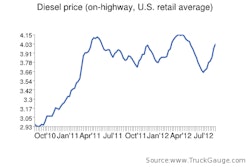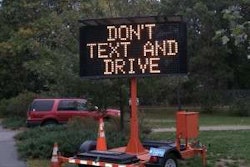The Federal Motor Carrier Safety Administration (FMCSA) is working to release a proposed rule that would mandate the use of electronic onboard recorders (EOBRs) by an estimated 3.4 million drivers, according to its own numbers.
This proposal will likely come in March, 2013 since the agency has until October 1, 2013, to issue a final rule, as directed by the Moving Ahead for Progress in the 21st Century (MAP-21) highway bill that was signed by President Obama in July. FMCSA is obligated to this timetable to allow time for public comments and review by the White House.
Fleets that already have EOBRs, or are in the process of implementing them, may be wondering if this new rule will require them to make any changes to the routine that they and their drivers have come to expect?
This is one of several questions that Dave Kraft, an expert on EOBR technology and legislation addressed during a live webinar on Thursday, August 16. Kraft is the director of industry affairs for Qualcomm Enterprise Services and the chairman of the American Trucking Associations’ EOBR task force.
Kraft said that to comply with the final rule, EOBRs will have more detailed data standards than EOBRs in use today. More standards will help enforcement officers inspect more driver logs. Devices, for instance, will record the location of the driver on the digital logbook from a standard database of location names.
EOBRs will also be required to be synchronized with the vehicle’s electronic control module (ECM) to detect vehicle movement and accurately record mileage. Kraft said he expects that nearly all of the forthcoming changes to EOBR specifications will be in line with the recommendations of FMCSA’s Motor Carrier Safety Advisory Committee (MCSAC), which were finalized last year.
One of the recommendations is that EOBRs will have driver identification for login and data access controls in the device and in the host network. This will allow driver data to be securely stored and transferred between vehicles and to the devices used by inspection officers. The committee also recommended that EOBRs will have to be certified by a third party. FMCSA will have to define the criteria and process used for certification.
The EOBRs in the market today are used on a voluntary basis. Literally any device that drivers are using now can pass for an electronic log to inspection officers. If the officer questions the accuracy of the device, a driver can go back to using paper logs. However, in the future, when drivers are not using certified EOBRs they will be put out of service, Kraft said.
For fleets that do not currently have EOBRS, Kraft said they will have about two years after the final rule becomes law to implement them. Many fleets that already use EOBRs will have their systems updated by suppliers. Kraft expects the FMCSA will have a sunset provision in the final rule that gives fleets plenty of time to replace EOBRs that cannot be updated to meet new performance specs.
Kraft also shared some statistics about how the use of EOBRs can have a positive impact on compliance. Fleets that implement the technology generally see a 12 percent reduction in log violations and the out-of-service rate for fleets with EOBRs is one percent compared to five percent for the overall trucking industry.
Kraft expects the agency to resolve the driver harassment issue directly with the U.S. Seventh Court of Appeals that vacated its EOBR rule last year in favor of a lawsuit from the Owner-Operator Independent Drivers Association (OOIDA). The court argued that the rule did not prevent fleets from using the technology to harass drivers, presumably with regards to how drivers choose to use their available “on-duty” time for driving.












